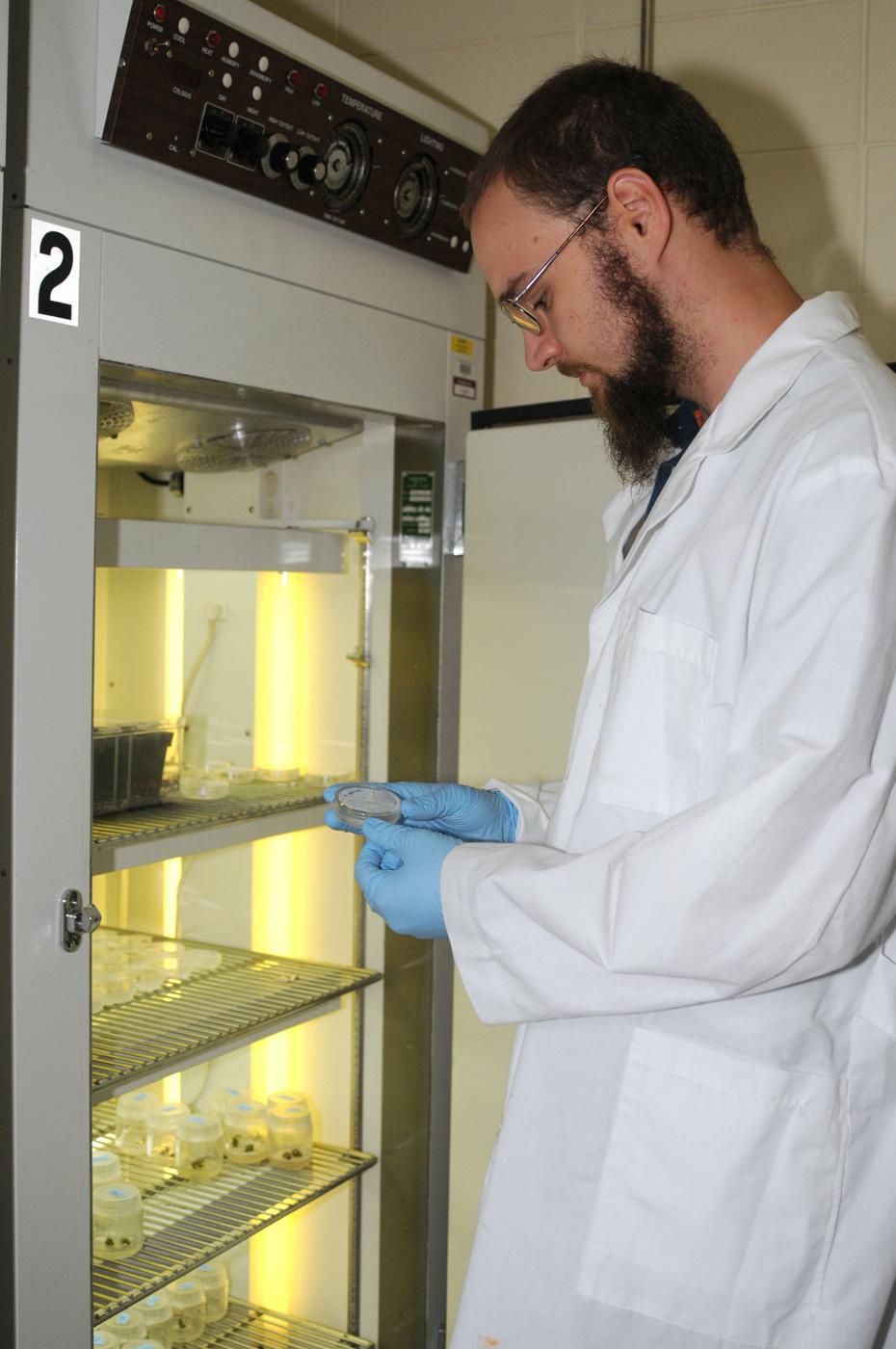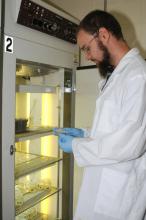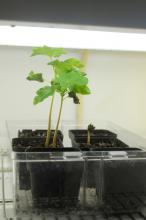Information Possibly Outdated
The information presented on this page was originally released on July 15, 2010. It may not be outdated, but please search our site for more current information. If you plan to quote or reference this information in a publication, please check with the Extension specialist or author before proceeding.
Toxin-free castor would be major help to industry
MISSISSIPPI STATE – The castor plant thrives in Mississippi and produces great quantities of valuable oil in its seeds, but it has a reputation that a team of researchers at Mississippi State University are trying to address.
Castor oil is the highly desirable, plentiful product of castor beans. The oil is used to produce everything from cosmetics and paints to jet aircraft lubricants and certain plastics. Generations ago, it was given by the spoonful as a laxative and used as a home remedy to treat a range of maladies.
Today, castor oil still has many desirable properties. The thick oil makes up 60 percent of the seed’s weight. For comparison, high oil corn or canola only produce about 25 percent oil by weight. Ninety percent of the oil is ricinoleic acid, a fatty acid found in large quantities only in castor oil. The acid has many industrial applications.
Brian Baldwin, a Mississippi Agricultural and Forestry Experiment station researcher in MSU’s Department of Plant and Soil Sciences, said castor can be used as a biodiesel but is more important as an organic raw material for industrial chemical processes. Because of Mississippi’s climate, the crop could be grown very successfully in the state.
“Castor seed yields in Mississippi can exceed one ton per acre,” Baldwin said. “That seed can produce 1,000 pounds of oil per acre, which is a much higher rate than other high oil-content seeds produce.”
Daniel Barnes, a doctoral student in MSU’s Department of Biochemistry and Molecular Biology, is trying to make it possible to grow the plant safely for commercial oil production in Mississippi. Castor seed meal, not the oil, contains ricin, a toxic protein that can become fatal if untreated in the body.
“Castor is the only place we can get commercial quantities of ricinoleic acid, but because of the presence of ricin, we are not producing castor in the United States,” Barnes said. “We want to get rid of the ability of the plant to make the toxin altogether.”
There is no law or restriction against the domestic production of castor, but Barnes said castor has not been grown commercially in the United States since the 1970s. It is often planted as an ornamental in Southern gardens.
“We import every bit of castor oil and caster seed, mainly from India and China,” Barnes said.
Once imported, the oil often must be refined and filtered yet again to meet Western industry’s quality standards.
“This is an expensive two-part process. We are importing a product that could be grown here, and then we have to re-refine it,” Barnes said.
To make castor a commercially viable U.S. crop, he is trying to discover a way to genetically modify the plant so that either the gene that produces the toxin is no longer expressed or the toxin is no longer produced.
One of the challenges is that castor resists being transformed. The genetic modification process involves a fragment of DNA foreign to the plant being inserted into the genetic code, where it is accepted and becomes active.
“Everything from cotton to corn and soybeans has been genetically modified, but castor is much more difficult. The castor cells can be transformed, but then you can’t get whole plants to grow from the cells,” Barnes said.
Compounding the problem is that castor is the only species in its genus, so there is no other plant like it. Poinsettia, spurge and rubber trees are among castor’s closest biological relatives, and these and other somewhat closely related plants are being examined to see if they contain genetic code useful to the castor research.
“We’re starting from scratch,” Barnes said. “That’s what makes it a wonderful question for research.”
Barnes has been working on ricin in castor for four years. He earned his master’s degree from MSU examining ways to reduce workers’ exposure to ricin in the production process. Now he is trying to actually remove this toxic protein.
The project is being conducted by faculty in MSU’s departments of biochemistry, plant and soil sciences and biological sciences. Others involved in the interdisciplinary team are Ken Willeford in biochemistry, and Donna Gordon and Nancy Reichert, both in biological sciences. Funding is through MSU’s Sustainable Energy Research Center and the Office of Technology Commercialization.






